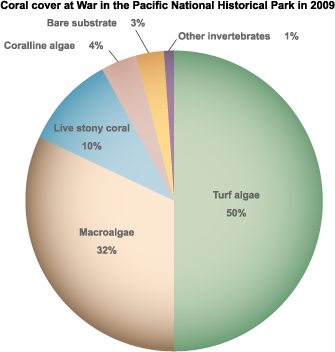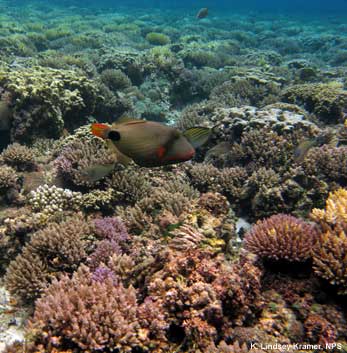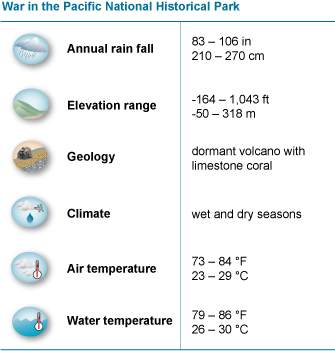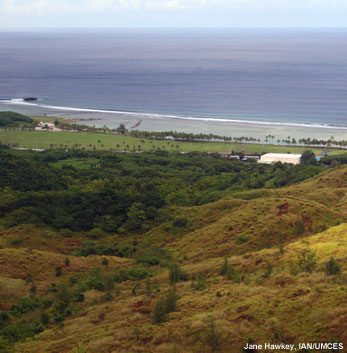Coral reefs in the War in the Pacific National Historical Park have incredible biodiversity
An astounding number of organisms make their homes on the coral reefs of War in the Pacific National Historical Park in the waters of Guam—in fact, more species of corals, fish, and invertebrates live on these reefs than on the coral reefs of Hawaii or Samoa. This incredible biodiversity makes for an amazing and complex ecosystem. On Guam reefs, you will find herbivores such as kichu, (convict tangs), and palakse (bullethead parrotfish), and predators such as Iʻe (jacks) or gadao, (groupers). Traditionally, these fish were an important part of the Chamorro diet, and are still fished for food today. The diversity of the plants and animals found on these reefs is rarely matched anywhere in the world.
Though there is high coral diversity, few juvenile corals are growing on the reef
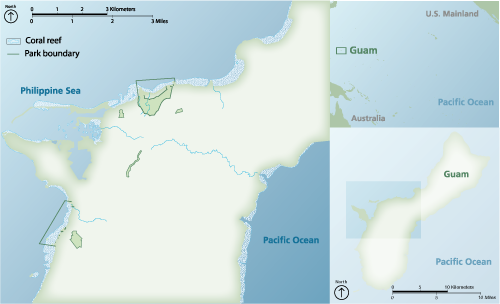 Number of units: 7
Number of units: 7
Total area: 2,037 acres
Marine area in park: 1,002 acres
Cover refers to the space covered by a particular organism on a reef or seafloor when viewed from above. Scientists often use changes in coral cover over time to monitor the overall health of a coral reef.
Since climate and geology play such an important role in coral reef health, scientists monitor conditions on land and on reefs. As climate change continues, scientists will study how changes in climate result in changes on the reef. For example, wet and dry seasons determine how much sediment is washed from land onto the reef. More rain means more sediment is transported to the ocean and blocks light to coral. In the face of climate change, the number of heavy rain storms and typhoons may increase and may even occur year round (Global Climate Change Impacts in the United States 2009). More frequent heavy rain storms would deliver larger amounts of sediments to coral reefs.
